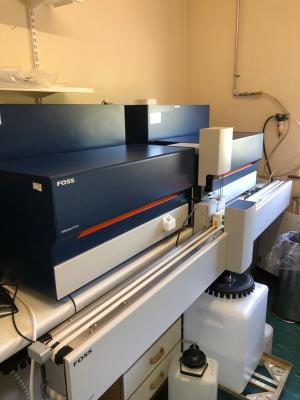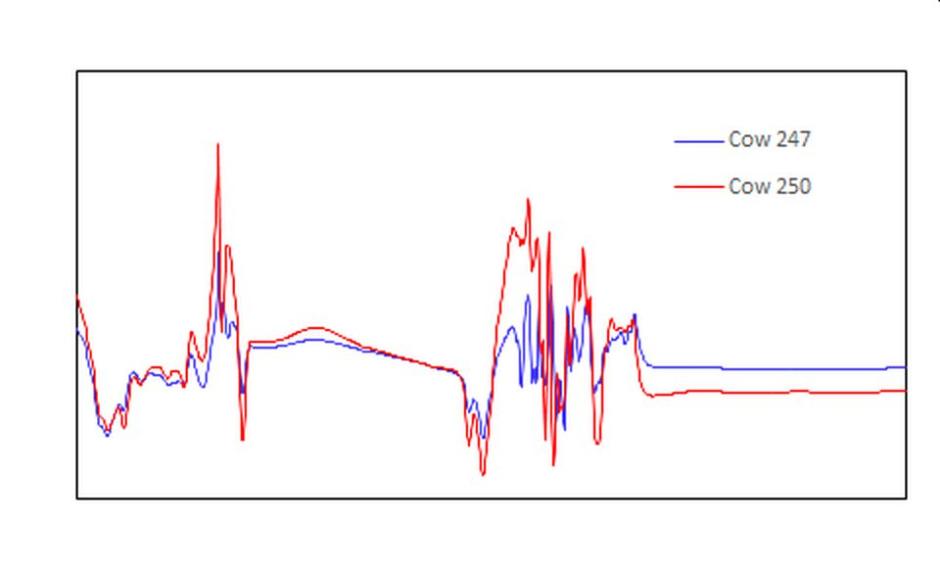AFBI unlocking the potential of milk scanning technology to help manage cows
Date published:
Mid-infrared spectroscopy (MIR) is the technique used by milk processors and milk recording organisations to predict the fat and protein content of milk.

The technique, which is used throughout the world to analyse milk samples, involves shining a light (within the mid-infrared range) through a small sample of milk using a MIR instrument (see photo). Some of the light is absorbed by the molecules in the milk and some is reflected. This process produces a ‘spectra’.
Using these spectra we are able to predict the fat, protein, lactose and urea content of milk with a high degree of accuracy using a series of calibration equations.
For example, Figure 1 shows the spectra for two different cows, and while the lines are similar, there are subtle differences, which indicate different milk compositions. More recently, MIR has been used to predict the type of fat in milk, allowing processors to identify how much of the fat in milk is unsaturated and how much is saturated. Research is also underway using MIR to identify the diet a cow is being offered (ie grass versus silage). This could be used to validate the ‘providence’ of milk from a farm, ie ‘grass fed’ milk.

Within these and other projects, MIR has been used to predict a number of ‘difficult-to-measure’ traits in cows, including the energy balance of individual cows. In addition, MIR has been used to identify cows in a herd that are ‘metabolically at risk’, and which may need special attention. MIR also offers potential to help reduce the environmental footprint of dairying. For example, MIR can be used to predict the methane production of individual cows, and to identify cows which are using nitrogen efficiently (or inefficiently). While some of these predictions equations are already being adopted, most are still in the development stage, with a number of research groups throughout the world, including those at AFBI, currently working in this area.
MIR has a number of benefits, including that it is ‘non-invasive’ (unlike a blood sample) and that milk samples are readily available from farms on both a bulk-tank and individual cow basis. It looks likely that in the near future information obtained from MIR analysis of milk samples will become increasing useful and important in helping farmers manage the nutrition of their herds, and indeed individual cows within the herd, and to help farmers reduce the environmental impact of dairy farming.
Notes to editors:
AFBI is an arms-length body of DAERA delivering research and development, diagnostic and analytical testing, emergency response capability and expert scientific advice for DAERA and other government departments, public bodies and commercial companies in Northern Ireland, and further afield.AFBI’s Vision is “Advancing the Local and Global Agri-Food Sectors Through Scientific Excellence”.AFBI’s core areas:Leading improvements in the agri-food industry;Protecting animal, plant and human health;Enhancing the natural and marine environment.